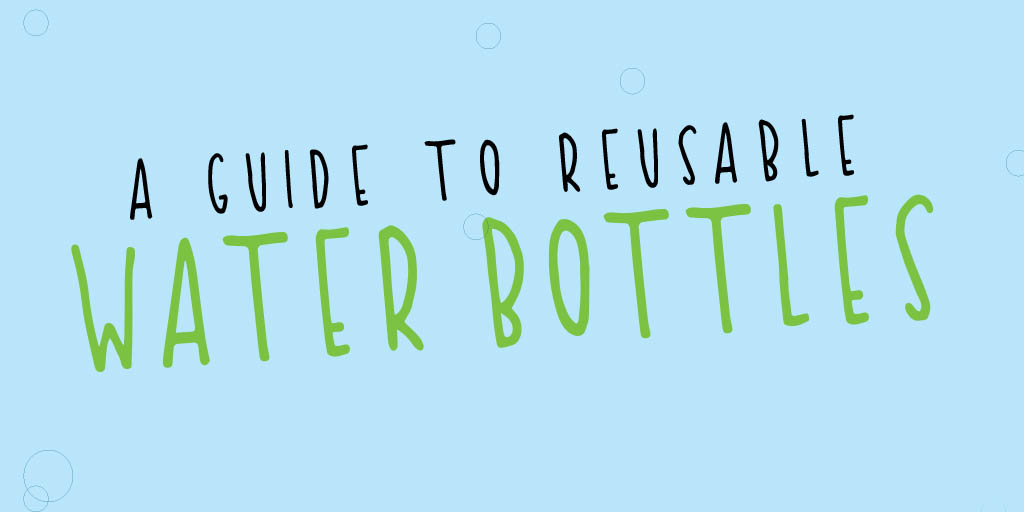A guide to resuable water bottles

Sick and tired of buying plastic water bottles? This guide on reusable water bottles will help get you started on a more environmentally responsible path.
Most reusable bottles usually fall under three types of materials: plastic, stainless-steel and glass. For this guide we’ll discuss the pros and cons of each bottle type.
Plastic
These are not the normal bottles that come in bulk at a grocery store, but are the ones designed to be reusable. Common plastic bottles are made of a potentially harmful chemical called Bisphenol-A (BPA). An imitation of estrogen, it can cause hormonal imbalances that could have consequences on your health if you’re exposed to it for a long time. However, most reusable water bottles are labelled as BPA-free, meaning they are less likely to affect your health.
Pros:
- Unlike a metal bottle, plastic is easier to clean since you can see the inside better.
- They are lightweight compared to the other types of bottles
- Usually they come with a straw making it less likely to make a mess, especially while walking or running.
- Prices for these bottles are usually cheaper than the other types.
- A wide range of designs are available since you can print it on the plastic like a decal, even getting custom designs.
- Most bottles are recyclable.
Cons:
- Even if they are BPA-free, there are sealants used in the bottles that will degrade over time and leach into the water you are drinking, so it’s better to replace them eventually.
- Depending on the plastic they could break or get cracks in them if you drop it.
- Because of the decal-like quality of the design, it’s better to not put them into a dishwasher to avoid accidently ruining it.
- Since it’s still plastic, it’s best to avoid putting very hot beverages into these bottles and avoid the washer to avoid melting the bottle.
- Can have a plastic aftertaste in your drink.
- Some of the plastics can stain after a length of time.
Stainless Steel
These bottles are made usually out of stainless steel, but sometimes are they are made of other metals, such as aluminium.
Pros:
- Since they’re made of metal it’s highly unlikely that it’s going to break easily.
- The constitution of the metal can keep your drink cooler for longer periods of time then the other types.
- Most of the bottles are free from sealants that could leak into the water, but make sure when buying one to look on the inside to see if it is just steel.
- Aluminium bottles are recyclable.
Cons:
- They can be scratched and dented if dropped too many times.
- There’s a metal aftertaste.
- Usually the most expensive type of bottle among the three.
- It’s hard to see into the bottle, so it’s sometimes hard to tell if it’s cleaned properly or not.
- Aluminium bottles need a sealant on the inside and have a higher risk to have chemicals leak into your drink.
- These are not able to go in the dish washer.
- They are heaviest of the bottle types.
Glass
We now look at the final type of bottle, glass.
Pros:
- Unlike the others, there are no strange aftertastes when drinking.
- Glass is a non-reactive material not needing sealants, therefore it is unlikely that chemicals will leak into the drink.
- They are easy to clean.
- You can repurpose glass items like a tea bottle to make a cheap version of a reusable bottle.
- They are easily recyclable.
Cons:
- Even though some bottles come with sleeves as protection, they have a higher chance of breaking when dropped than the other types.
- Because they can shatter, they are not allowed in many beaches, public pools, parks and campgrounds.
- Some manufacturers produce bottles wrapped in shatter-resistant coating, so when the glass breaks inside the shards remain inside the coating. Mmmm glass shards, so tasty.















